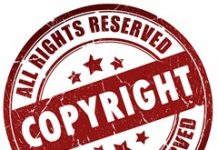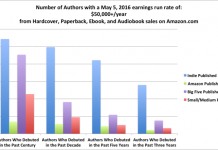Introduction:

The issues of plagiarism and copyright overlap in fan fiction (and fiction in general) causing a great deal of confusion and misunderstanding. Wholesale copying without attribution (giving credit to the source) is plagiarism but not always copyright infringement. Copyright infringement can happen even when credit is being given. This piece attempts to talk about the two in a broad sense. None of the following should be considered legal advice. If you have a specific legal question, consult with an intellectual property attorney. This blog and the authors of the blog will not be responsible for any harm or damages suffered by one who takes action because of the contents of this post.
Plagiarism
Plagiarism is an ethical issue. Ethics are defined by the community. For instance, lawyers are bound by a code of ethics and while there is a “Model Code”, each state bar association sets out the rules of appropriate behavior for lawyers who are members in that state. Those rules can be completely different. I live in Iowa and we have very restrictive advertising rules. Nebraska and Illinois advertising rules are much more lenient. There has been a lot of campaigning by the attorneys in Iowa who live on the borders between the states to loosen the advertising rules.
Thus, what is considered ethical in the community of lawyers in Nebraska and Illinois is different than what is considered ethical in the community of lawyers in Iowa.
What the community of readers at fanfiction.net might believe is ethical behavior might be different than what binds students at Harvard University. Because ethics can depend upon the community, the definition of plagiarism can vary from person to person.
Most people can agree that verbatim copying is plagiarism but at universities, there is other examples of plagiarism. The Modern Language Association has adopted this definition:
”Using another person’s ideas or expressions in your writing without acknowledging the source constitutes plagiarism…. [T]o plagiarize is to give the impression that you wrote or thought something that you in fact borrowed from someone, and to do so is a violation of professional ethics…. Forms of plagiarism include the failure to give appropriate acknowledgment when repeating another’s wording or particularly apt phrase, paraphrasing another’s argument, and presenting another’s line of thinking” (6.1; see also Gibaldi, MLA Handbook, ch. 2).
Thus plagiarism is not dependent upon exact or verbatim copying nor is it dependent on the size of the source reference used. Plagiarism depends, in large part, on what amount of borrowing one does without attribution. Fan fiction is almost always referencing the source work of their material and thus is less prone to be plagiarizing the original work. Fan fics that copy other works including other fan works or other published works and passing it off as one’s own is also plagiarism. Cassandra Clare is accused to have passed off someone else’s fan fiction as her own work, for example.
Copyright
Copyright isn’t well understood by fans or creators. Essentially copyright is a bundle of rights that accompanies the fixed expression of an idea. It’s the fixed expression that is protected, not the idea. When an author writes a book or a television show is created and produced, there are a number of rights that develop known as intellectual property rights. These are not true property rights, like ownership of land (known as real property) or your car (known as personal property) but certain rights to distribution, reproduction, and derivative works belong exclusively to the original copyright holder.
In fan fiction and youtube, you often see disclaimers like “no copyright infringement intended”, but copyright infringement is not based on intent. The derivative work is either infringing or not, regardless of the intent of the creator of the derivative work
According to the Copyright Act, derivative works are described as follows:
A “derivative work” is a work based upon one or more preexisting works, such as a translation, musical arrangement, dramatization, fictionalization, motion picture version, sound recording, art reproduction, abridgment, condensation, or any other form in which a work may be recast, transformed, or adapted. A work consisting of editorial revisions, annotations, elaborations, or other modifications, which, as a whole, represent an original work of authorship, is a “derivative work”.
Copyright intersects with plagiarism when the original creator works are used regardless of attribution. In other words, in the Harry Potter case the lower court determined that the non fiction encyclopedia included too much of the original Harry Potter work.
Examples differentiating the two
Not every instance of plagiarism is infringement and vice versa. If I published Pride & Prejudice under my own name, I would be committing plagiarism, but because the work is in the “public domain”, I would not be infringing on copyright. Works in the public domain (mostly works published prior to 1923) are not entitled to copyright protection any longer.
If I published a work under my own name that contained a paragraph from 10,000 different novels and didn’t give any attribution, I would be committing plagiarism but probably not copyright infringement. In the case of Craft v. Kobler, 667 F. Supp 120, the derivative work was found to be infringement when the passages were taken from 15 books written by the same copyright holder. In New Era Publications Int’l v. Carol Publishing Group, 904 F.2d 152 (2nd Cir. 1990) a biography which used passages from 48 different works but only a small percentage of the works were used was found to be permissible.
If I published Nora Roberts “The Next Always” under her name but without her permission, I wouldn’t be committing plagiarism, but I would be infringing on her copyright.
What I have always found fascinating about fan fiction and copyright is the conflict between fans wanting the fan fiction to hew close to the original source and the issue of copyright infringement.
More on Derivative/Transformative Works
In most cases, the closer the derivative work is to the original, the more likely it is copyright infringement. Many fan fiction and youtube creations contain a disclaimer that infringement is not intended. However, copyright infringement does not depend upon intent. George Harrison was sued for his 1969 song “My Sweet Lord.” In 1971, Bright Tunes filed a copyright infringement lawsuit alleging that it had been a copy of “He’s So Fine.” During testimony in the trial, Harrison said that he wasn’t thinking of “He’s So Fine” when he wrote the song. During the trial, the songs were compared, word for word, note for note, and the jury found Harrison guilty of infringement and was ordered for over $1.6 million in damages.
In the 1994 case of Campbell v. Acuff-Rose Music, Inc., 510 U.S. 569 (1994), 2 Live Crew was sued for a parody of the Roy Orbison sung song “Pretty Woman.” The Acuff Rose case turns solely on a finding that 2 Live Crew’s song was a parody but it’s instructive because it sets out some of the elements in measuring fair use protection of derivative works. In evaluating whether derivative works are infringing, the methodology employed should be as follows:
Look to the nature and objects of the selections made, the quantity and value of the materials sued, and the degree in which the use may prejudice the sale, or diminish the profits or supersede the objects, of the original work.
Id. at 576.
If the work fulfills the test set forth, it is no longer derivative. Instead it is transformative or has become an original new work itself. “The more transformative the new work, the less will be the significance of other factors, like commercialism, that may weigh against a finding of fair use.” Id. at 579. Parody is considered transformative. “Like less ostensibly humorous forms of criticism, it can provide social benefit, by shedding light on an earlier work, and, in the process, creating a new one. “ Id. at 580.
The first element of the methodology is looking at whether the work is looking at the nature and objects that were utilized in the secondary work. When the secondary work does not critically examine the original work, the other factors become more important. “If, on the contrary, the commentary has no critical bearing on the substance or styel of the original compisition, which the alleged infringer merely uses to get attention or to avoid the drudgery in working up something fresh, the claim to fairness in borrowing from another’s work dimisnishes accordingly (if it I does not vasnih), and other factors, like the extent of its commerciality, loom longer.” Id. at 581-82.
The value of the materials used is less important when comparing works of fiction against each other. Althought, if comparing a short work of fiction against a longer work of fiction, this can mitigate against infringement.
The third factor refers to the quantity and value of the material uses. In other words, how much of the source material and of what important is the source material before it is infringing. In looking at 50 Shades, the characters of the Twilight series are very important whereas I would argue that the settings are less important. I.e., the Twilight series takes place primarily in Forks, Washington and the 50 Shades is also set in Washington. What makes it curiouser, however, is that Bella and Edward honeymoon in a remote paradise island and, alas, so do Ana and Christian. In Twilight, the paranormal aspects of the story are quite important and in 50 Shades, those elements are replaced with dark sexual desires. Possibly replacing a core element of the Twilight series is sufficiently different.
Finally, is the issue of commercialism. The court acknowledges that a good parody can essentially kill the market for the original however “the role of the courts is to disginuish between biting criticism [that merely] suppresses demand [and] copyright infringement,[, which] usurps it.” Id. at 592.
The aforementioned methodology, however, is a fair use defense for a derivative work. James et al could argue that her work is not derivative but original (although given MOTUs existence this is an incredibly difficult argument to make). If the work is not derivative, then the measurement is whether the other work is infringing based on the substantial similarity standard (which is tested by a number of different concepts such as abstractions test, total concept and feel, pattern, subtractive, ”extrinsic/intrinsic”, among others).
Post Acuff Rose Cases
Two post Acuff cases of interest deal with non fiction works:
Castle Rock Entertainment Inc v. Carol Publishing Group
Castle Rock, the copyright owner of Seinfeld, sued Carol Publishing over a non fiction trivia book published about the events and characters in Seinfeld. Castle Rock Entertainment Inc v. Carol Publishing Group, 150 F.3d 132 (2nd Cir. 1998) There was no parody defense here. Instead, the non fiction trivia book was said to inappropriately copy creative expression rather than facts. In other words, the Senfield characters and their words were creative expression unlike the number of at bats a baseball player may have or the number of times it has rained in September in California for the past twenty years.
Harry Potter Lexicon case (Warner Bros. Entertainment, Inc. v. RDR Books)
J.K. Rowling sued to prevent the publication of the Harry Potter Lexicon. This was a work based on a website that was run by the Lexicon author with the stated approval of JK Rowling herself. Rowling argued in her complaint, however, that “[T]here is a big difference between the innumerable Harry Potter fan sites’ latitude to discuss the Harry Potter Works in the context of free, ephemeral websites and unilaterally repackaging those sites for sale in an effort to cash in monetarily on Ms. Rowling’s creative works in contravention of her wishes and rights.” Complaint, Warner Bros. Entertainment, Inc. v. RDR Books, (No. 07 Civ 9667), ¶ 4. In issuing the injunction in support of Rowling, the court found that the work was not derivative, but contained too much copying of Rowling’s material to be considered fair use. In employing the methodology in the Acuff Rose case, the judge determined that the balance of factors weighed in Rowling’s favor. In December 2008, a rewritten version was published by RDR Books.
Fanfiction and Commercialism
Professor Rebecca Tushnet who will be on hand to answer questions later this week, argues that fan fiction is not infringement because there is no commercial aspect to fan fiction. It is written and distributed freely without renumeration. In Let Everyone Play: An Educational Perspective on Why Fan Fiction Is, or Should Be, Legal, the authors argue that a footnote in Suntrust Bank v. Houghton Mifflin (268 F.3d 1257 (11th Cir. 2001)), suggests that not for profit writing mitigates against finding fan fiction infringing:
Of great importance with respect to fan fiction is footnote 24 attached to that statement: “Randall did not choose to publish her work of fiction on the internet free to all the world to read; rather, she chose a method of publication designed to generate economic profit” (Suntrust Bank v. Houghton Mifflin, 268 F.3d 1257, 1269 (2001)).
Disclaimers v. Cease and Desist Letters
Like the ineffectiveness of copyright disclaimers by fan fiction writers so to are many of the cease and desist letters/emails/blog posts written by authors lacking in legal support. Merely because the original creator doesn’t like slash fiction or AU fiction that is loosely based on their work doesn’t mean that the fan fiction work is infringing. In other words, the author of the original work does not decide what is infringing. C&D letters are not legal determinations of wrongdoing either. Often C&D letters are used simply to scare someone into taking an action that the author of the C&D letter desires. A C&D letter should not be ignored, but whether a work is copyright infringement depends on the actual text of the secondary work.
Conclusion
From a purely intellectual standpoint, a case involving 50 Shades and Twilight would be fascinating. 50 Shades was fan fiction. It was written by an author who gives her direct source of inspiration to a copyrighted work. It has dozens of similarities with the original, particularly the emotional arcs of the characters and the characters’ traits, but it also deviates in major ways. It speaks to the issue of copyright of characters, rights of publicity of the actors like Pattison and Stewart, and the scope of transformative works. While the case would likely go to trial where a jury would decide it, the mere fact that a case like this makes it past the motion point would provide good precedent. It could clarify the legal bounds of fan fiction and identify more clearly the issue of derivative works.
(Of interest and not covered here is to what extent James has protection over her unregistered work, Masters of the Universe. While copyright exists for any fixed expression of an idea, it is not entitled to statutory damages until the work is registered even though under Reed Elsevier, Inc. v. Muchnick, 130 S. Ct. 1237 (2010), the Supreme Court ruled that registration is not a jurisdictional prerequisite to filing an infringement suit, but it does prevent the damages to which an unregistered work may be entitled. It might not even be possible for James to register her work because it lacks originality without the unchanged names, locations, and the like. It might also limit the claims of piracy she could make against the freely shared MOTU).
(Via Dear Author: Romance Novel Reviews, Industry News, and Commentary.)

































